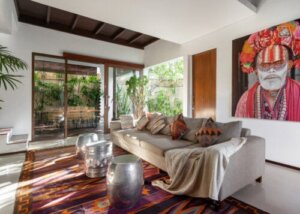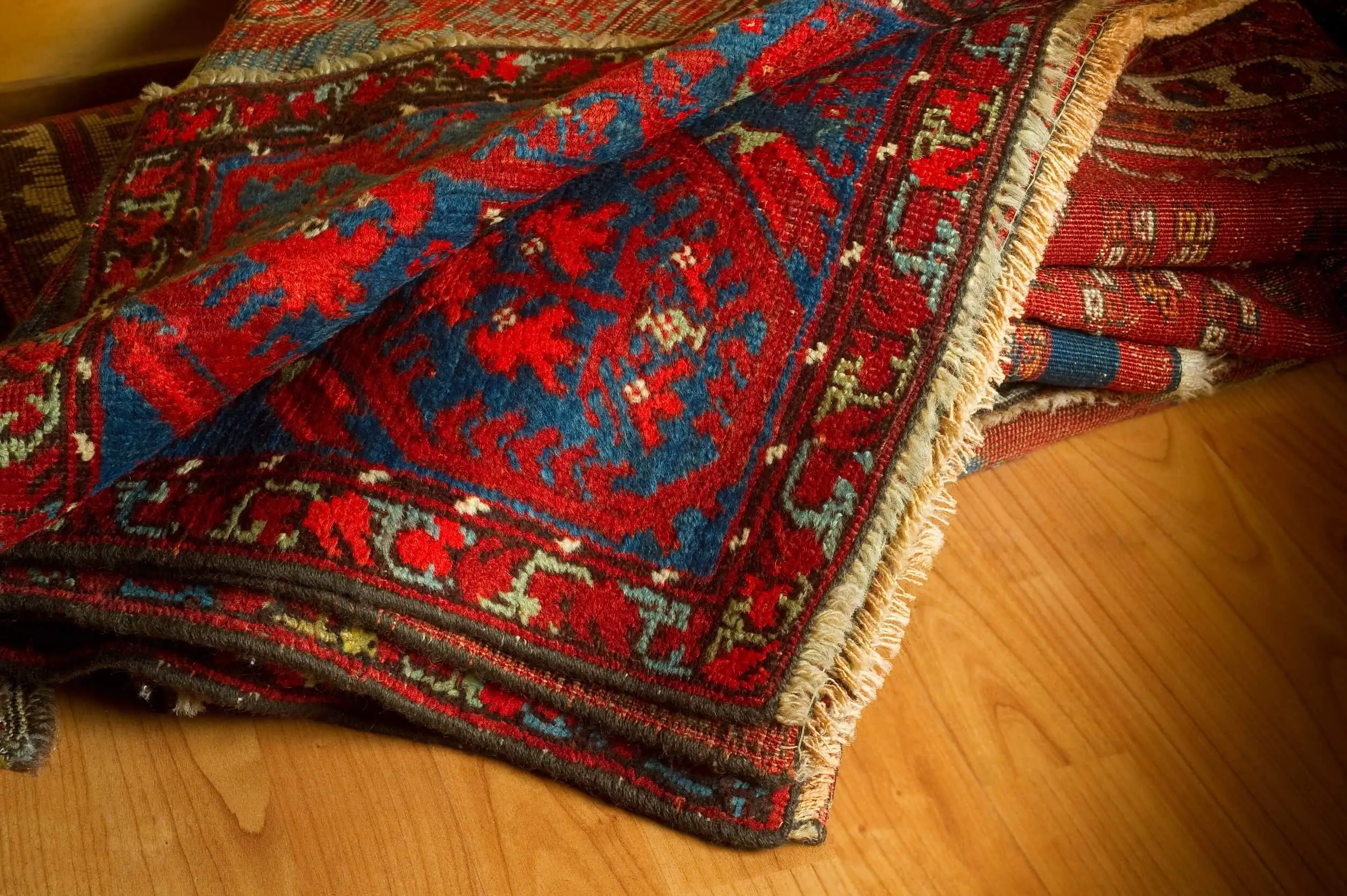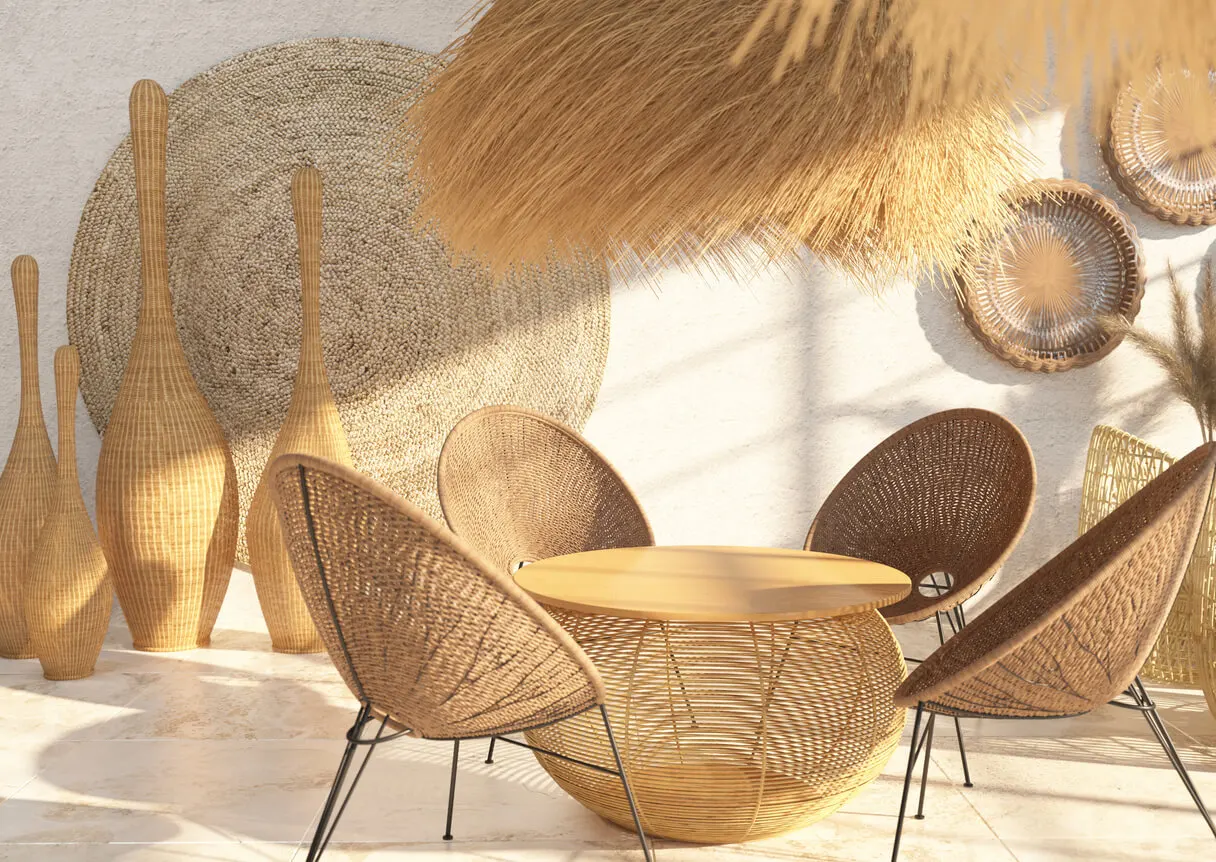Ethnic Style Decoration: Tips to Implement It at Home

There are interior design trends to add a unique look to spaces. One of them is the result of the combination of elements from many cultures. This transforms ethnic style decoration into a versatile decor style with a variety of options and the possibility of combining sub-styles.
In this trend, the fundamental thing is to generate a feeling of warmth through strong and cheerful colors. Details from various civilizations and cultures can be mixed.
From African style to Mexican to the Arab or boho style, are all viable possibilities for ethnic style decoration. To use this style of decor in your home, natural objects, textiles, and craftsmanship are key.
What is ethnic style decoration, and what are its characteristics?
This is an interior decoration trend based on elements that make up an exotic atmosphere. The goal is to create bright spaces with strong colors and accessories that generate a feeling of warmth.
The premise of this trend is to prioritize natural objects and craftsmanship from one or a combination of cultures. To achieve this, it turns to a series of techniques that lead to an oriental atmosphere, combined with natural details that tend to be more typical of African decoration.
For example, prints, bangs, and upholstery are prioritized. Although this may seem like a rustic fashion, ethnic style decoration is synonymous with warmth and elegance.
Although ethnic style decoration can be applied in almost any area of the home, it’s most commonly used in living rooms and bedrooms. The multiple cultural aesthetics included in this trend make it very versatile since it’s possible to include elements in a wide range of colors, sizes, and tastes.

Cultural styles included in ethnic decoration
Ethnic decoration is complex to define, since it is made up of a combination of Oriental, African, and American trends. However, all of these influences are characterized by the use of natural and handcrafted details.
- African: This influence is linked to the varied fauna that exists in the continent. It usually includes elements that refer to the wild, such as tree trunks, stones, branches, feathers, and animal ornaments.
- Inca: Stone or ceramic objects, as well as strong colors are often features in this case.
- Aztec: The cushions and furniture used in this trend are very widely used in ethnic style decoration. The typical green color alludes to quetzal feathers.
- Oriental: The colors red and black predominate in the oriental style.
- Arabian: This style is easily identified by its geometric shapes, arches, carpets, and cushions.
We think you may also enjoy reading this article: Challenge Your Creativity with These 7 Original Ideas to Decorate Bottles
Ideal elements to implement ethnic style decor
To incorporate this trend in your home, you have to start with some characteristic objects. From textiles to furniture and ornaments, it’s important to pay attention to colors, patterns, and typical materials.
Color range
Like most interior design trends, the ethnic style is characterized by a particular color palette. To apply it in the home, earth tones, such as reddish, terracotta, and bronze, should be prioritized. Brown and beige can also be included.
Contrasts with other more neutral colors are also common. Strong tones and combinations achieve colorful environments characteristic of the ethnic style, where warmth and harmony should be emphasized.
Materials and formats
Another aspect to take into account is the use of handmade materials, such as furs and leather for carpets. Also, velvet, wool, linen, and silk are great options for other textiles. It’s a great idea to incorporate wood, copper, or silver, especially if they reflect hand craftsmanship.
As for designs, geometric and zigzag formations, typical of Aztec and African cultures, often abound. Triangles and rhombuses can be included in rugs and tapestries as well as in furniture.
Trunks and natural objects
One of the best ways to reflect the contact with nature in home decoration is through indoor plants. In the ethnic style, they are also included. However, log installations are more typical. The same can function as side tables, seats, or countertops to hold ornaments.
Among the most common indoor vegetation for ethnic style are cacti. First of all, cacti are commonly used because of the green color that brings closeness to natural environments. Also, they have a strong link with Mexican culture. It’s advisable to plant them in clay or wooden pots.
Tapestries
An ethnic-style interior environment should include at least a couple of tapestries on its walls. The spaces they occupy, and the shapes, and colors may vary, but tapestries are a typical decorative element for this trend.
Cushions
Both the bedroom and the living room armchairs should include cushions among their accessories. This is a good opportunity to incorporate this trend into the aesthetics of your home.
The specific designs depend on your personal taste, but it’s important to include geometric figures, zigzags, bangs, and colors that are in tune with ethnic style decor.
Baskets and basketry in ethnic style decoration
A material that can’t be missing in any room with this trend is wicker. Whether for making baskets or for making lamps and ornaments, this element of natural origin brings rusticity and craftsmanship.

Typical sculptures
Objects linked to handicrafts are ideal accessories to achieve an ethnic profile in home decoration. For example, circular plates, Inca figures, or African masks are some perfect options to hang on walls or display on shelves.
Materials such as wood or ceramics should prevail.
Decorations for ethnic style rooms
There are a number of objects used as ornaments that are very characteristic of the ethnic trend. One of them is the handmade plate, generally painted with two contrasting colors. For example, black and white or brown and white look great.
Another common item to hang on the wall is the African hat, also known as juju or tyn. Pictures of animals and straw objects also come from many African cultures and fit the ethnic trend. Even certain musical instruments of oriental origin work well on the walls.
Like this article? You may also like to read: Eco-Friendly Decoration: Sustainable Ways To Decorate Your Home
Indoor and outdoor decor
Although the ethnic style is oriented to indoor environments, it’s also possible to adapt it to patios and terraces. This is due to the fact that most of the objects, ornaments, and furniture used have a rusticity that’s ideal for outdoor environments.
The closeness that this trend has with nature and craftsmanship makes it possible to transfer it to spaces such as a deck or balcony. In particular, wooden furniture or wicker objects fulfill practical functions outdoors. In this way, ethnic style decoration provides a wide range of decorative possibilities.
All cited sources were thoroughly reviewed by our team to ensure their quality, reliability, currency, and validity. The bibliography of this article was considered reliable and of academic or scientific accuracy.
- Bustos Flores, Carlos, La producción artesanal. Visión Gerencial [Internet]. 2009; (1):37-52. Recuperado de: https://www.redalyc.org/articulo.oa?id=465545880009
- Parra Vorobiova, Reguina. Moda étnica: códigos ancestrales y propuestas contemporáneas. Federación Latinoamericana de Semiótica. deSignis, vol. 32, pp. 123-132, 2020. Disponible en: https://doi.org/10.35659/designis.i32p123-132
- Villegas Marín, Claudia , González Monroy, Beatriz , FIBRAS TEXTILES NATURALES SUSTENTABLES Y NUEVOS HÁBITOS DE CONSUMO. Revista Legado de Arquitectura y Diseño [Internet]. 2013; (13):31-45. Recuperado de: https://www.redalyc.org/articulo.oa?id=477947372003
This text is provided for informational purposes only and does not replace consultation with a professional. If in doubt, consult your specialist.








